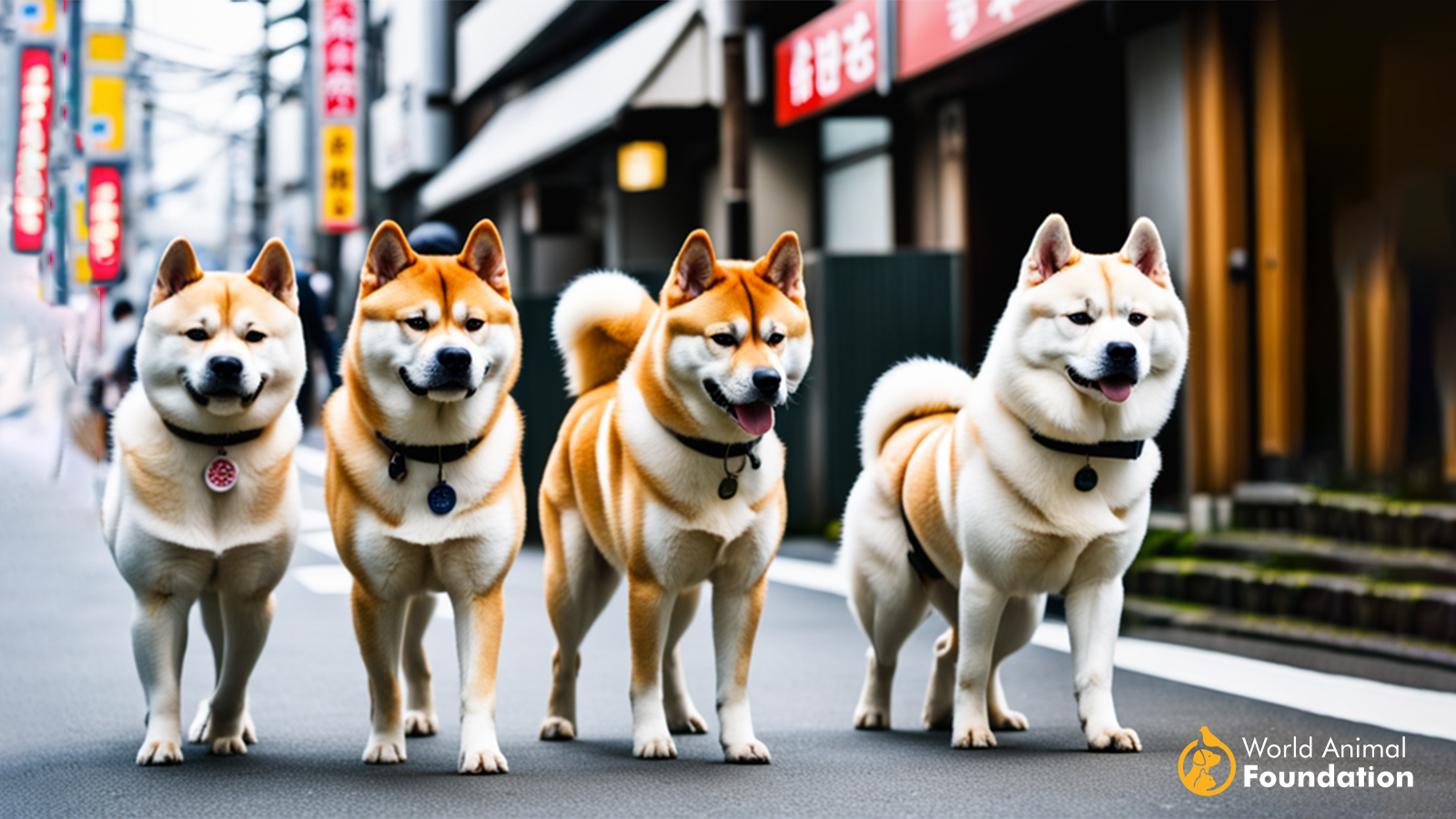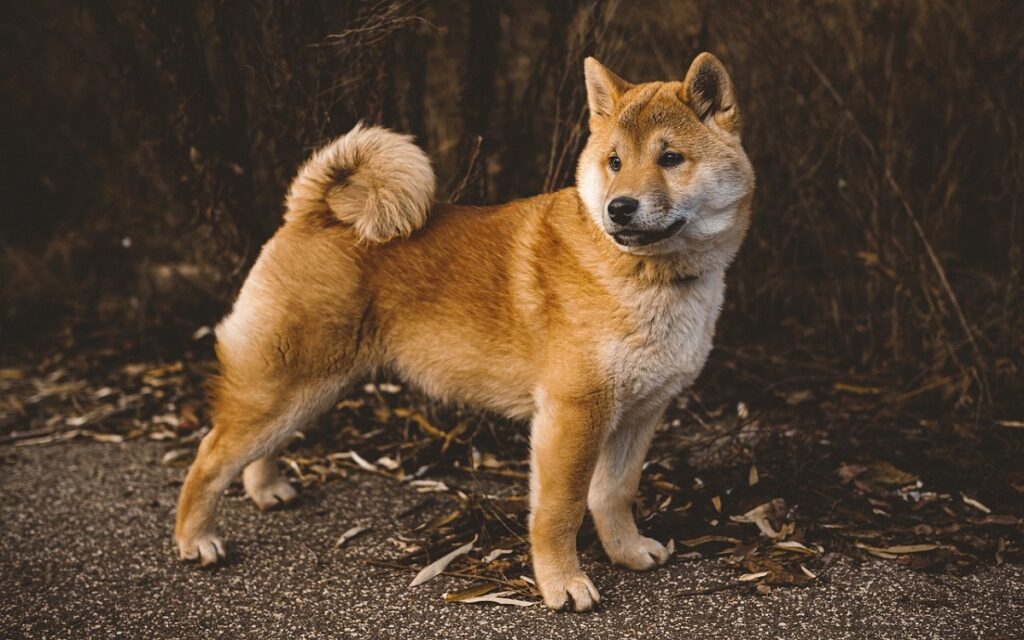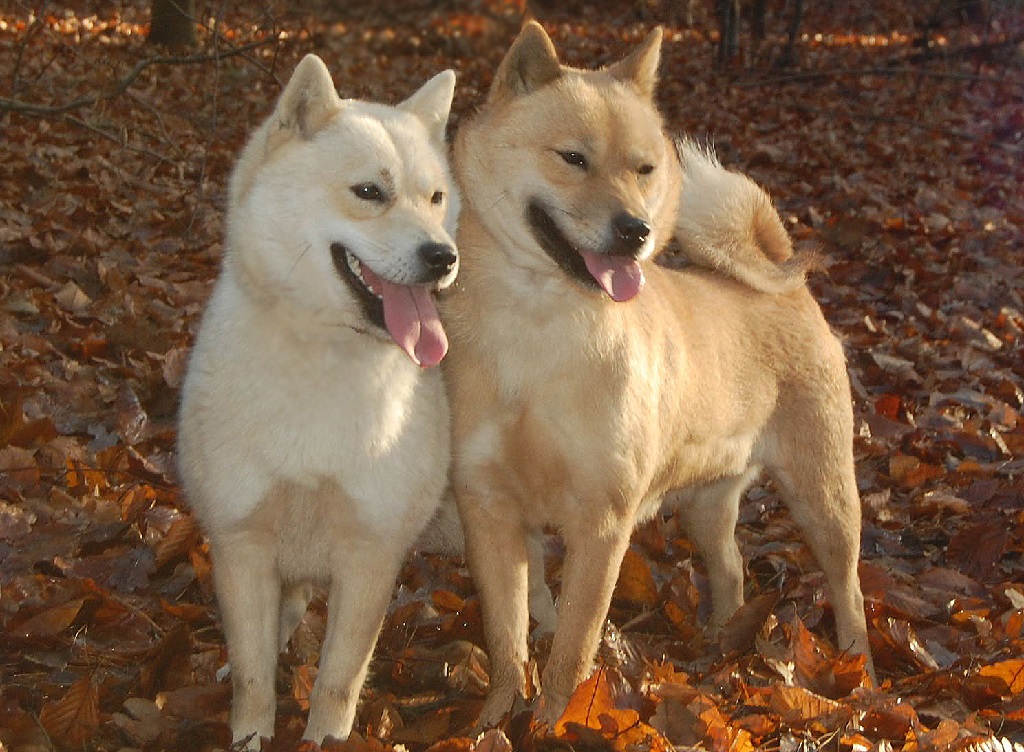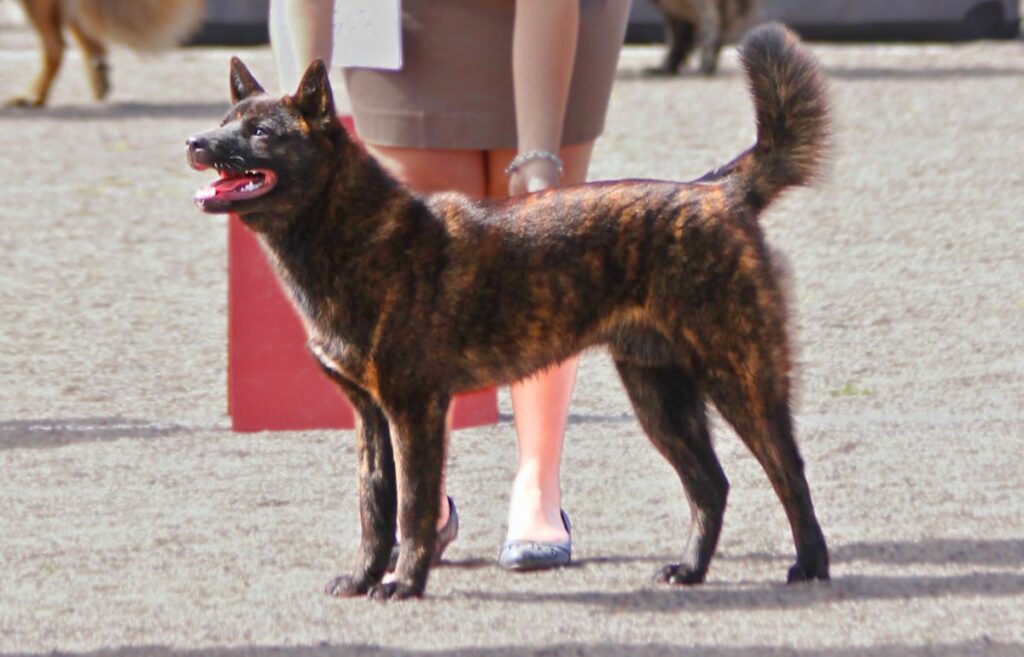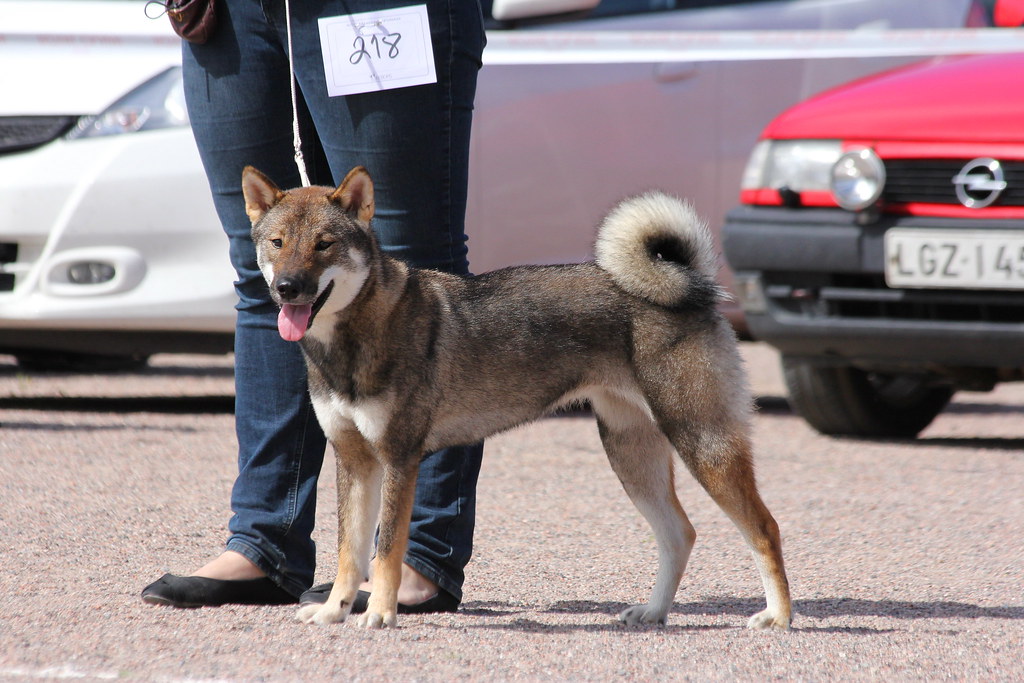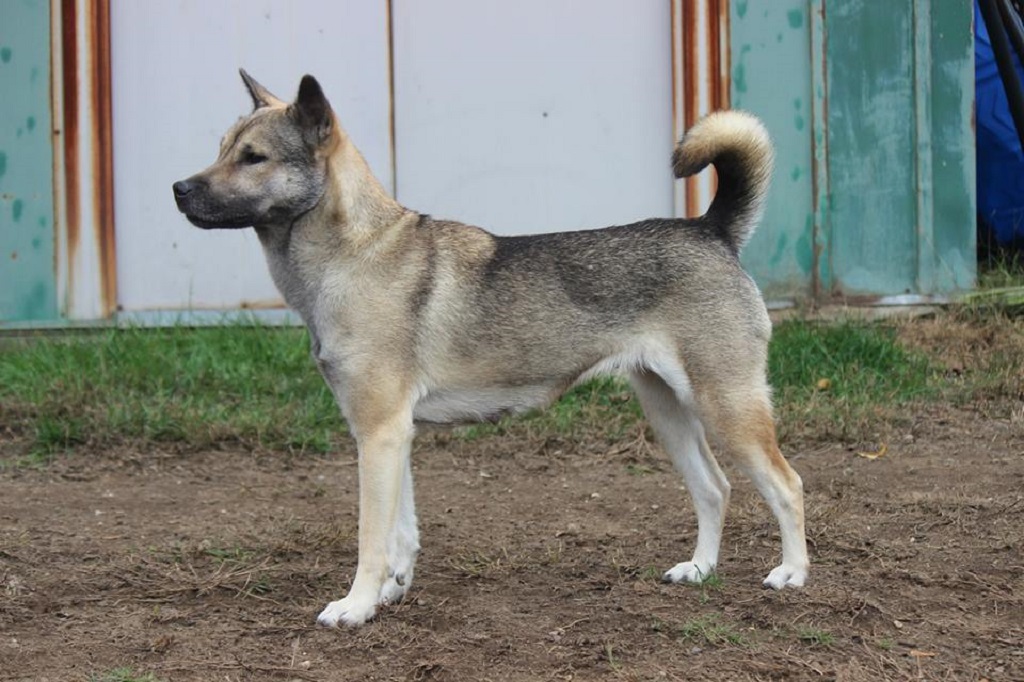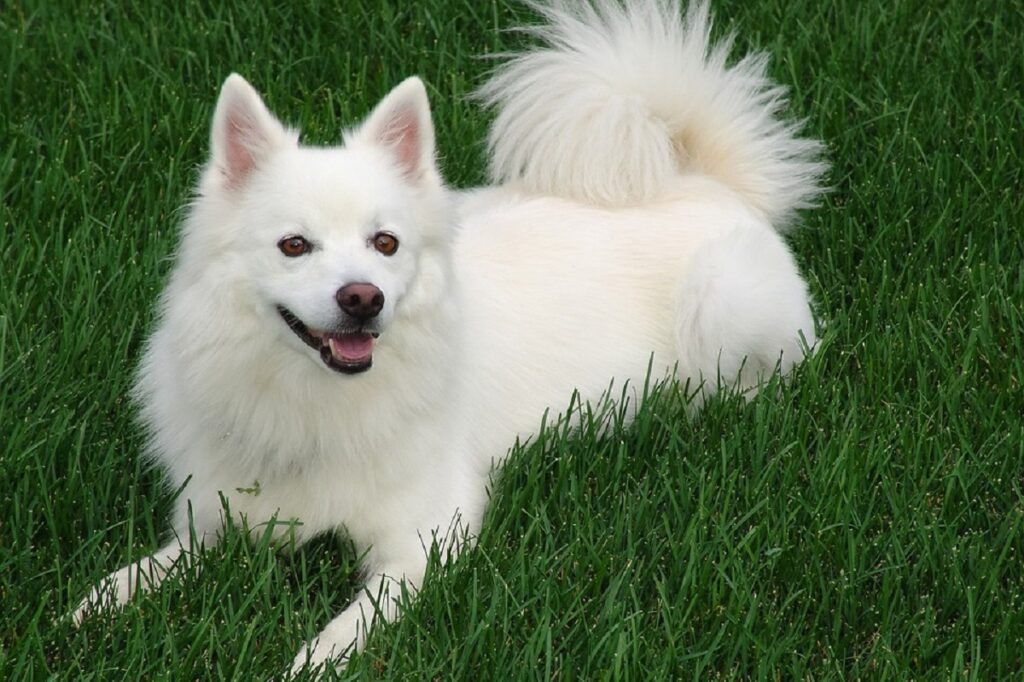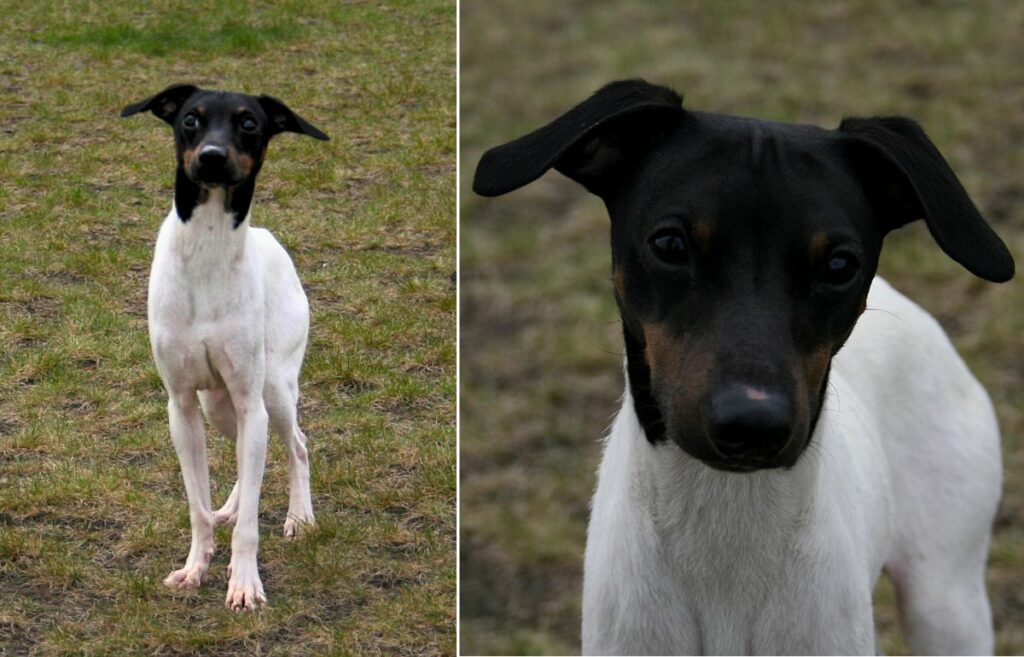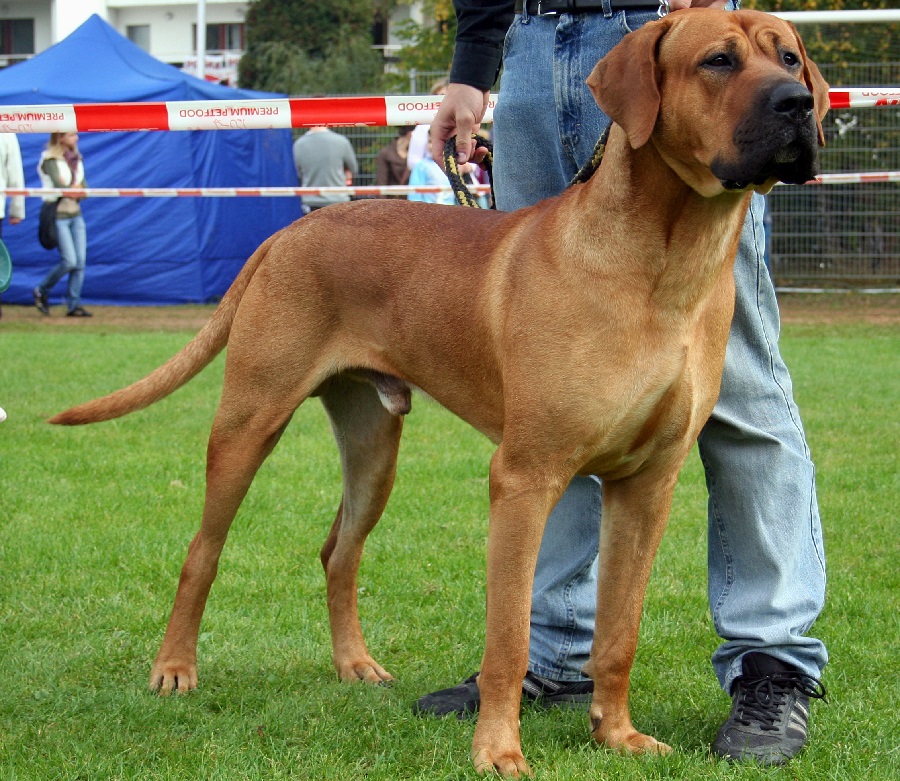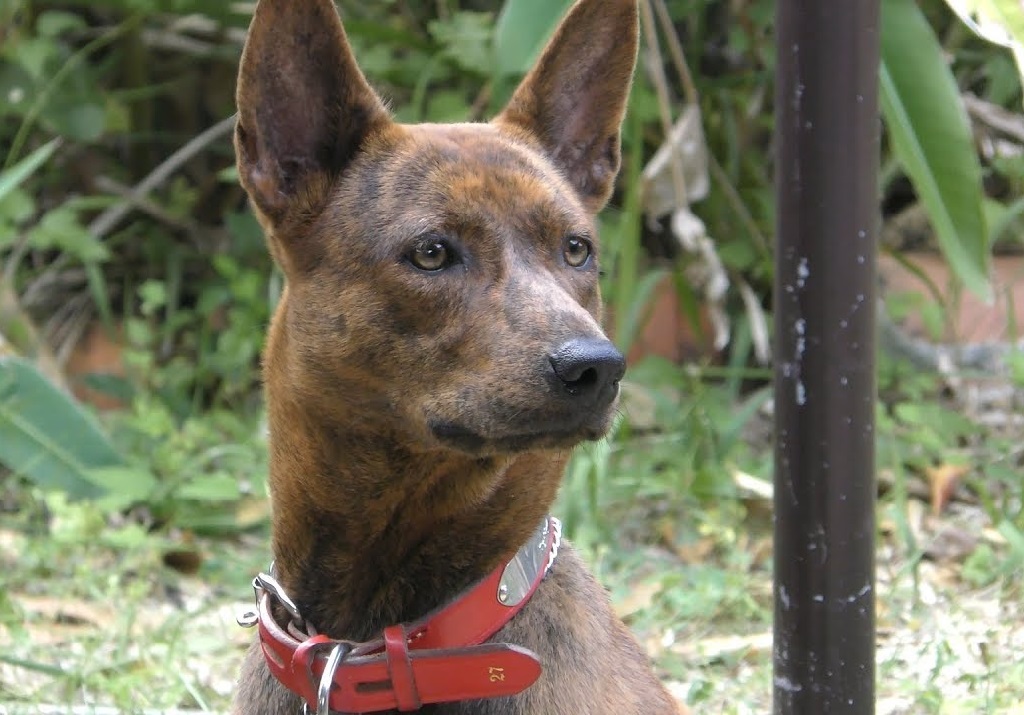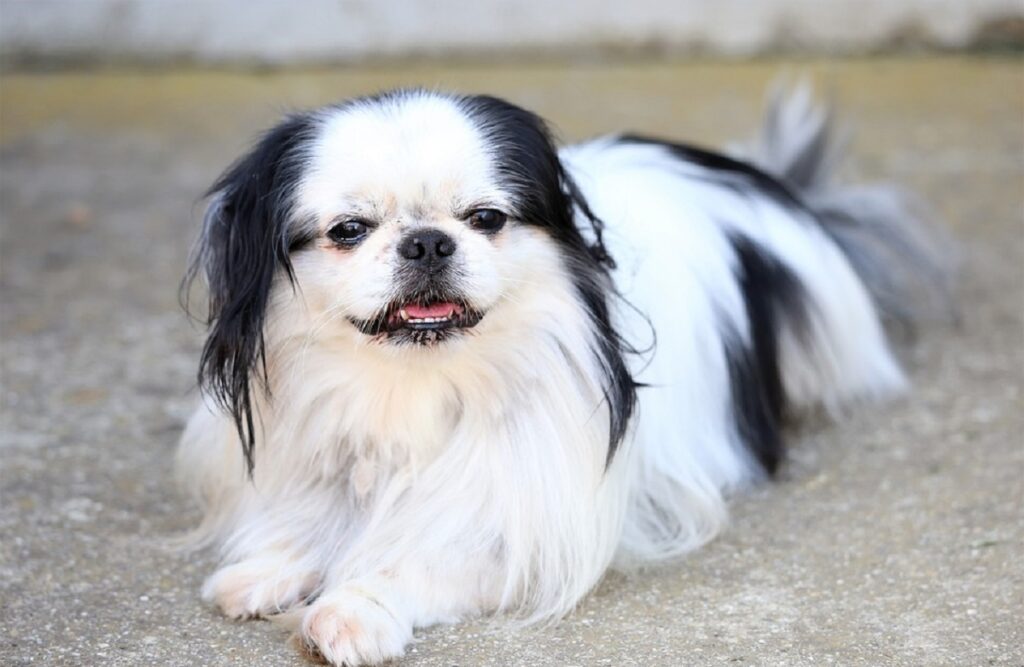Japan, a land of ancient traditions and captivating culture, has gifted the world with more than just stunning landscapes and innovative technology. It’s also the birthplace of a unique collection of dog breeds, each brimming with personality and poise. From the fluffy Shiba Inu to the dignified Akita, these 11 Japanese breeds showcase a remarkable range of traits, combining loyalty and intelligence with striking appearances. Discover the captivating stories and distinctive characteristics of these fascinating canines, and find out which breed might just steal your heart.
Nearly every country has its own established dog breeds, and Japan is no different. In fact, one of Japan’s native breeds — the Akita Inu — made for a heartwarming movie that tugged at the heartstrings of millions of people around the globe — myself included!
Japanese dog breeds tend to have unique characteristics and belong to the spitz breed. They mostly have fluffy coats that require regular maintenance, short pointed ears, and curled tails.
Some of the Japanese dog breeds on this list didn’t necessarily originate from Japan but have become such staples in the country, they definitely belong on the list.
Native Japanese Dog Breeds
There are six dogs that are considered to be a native Japanese breed, with storied histories that date back thousands of years. Let’s take a look at these Asian dog breeds.
Akita Inu
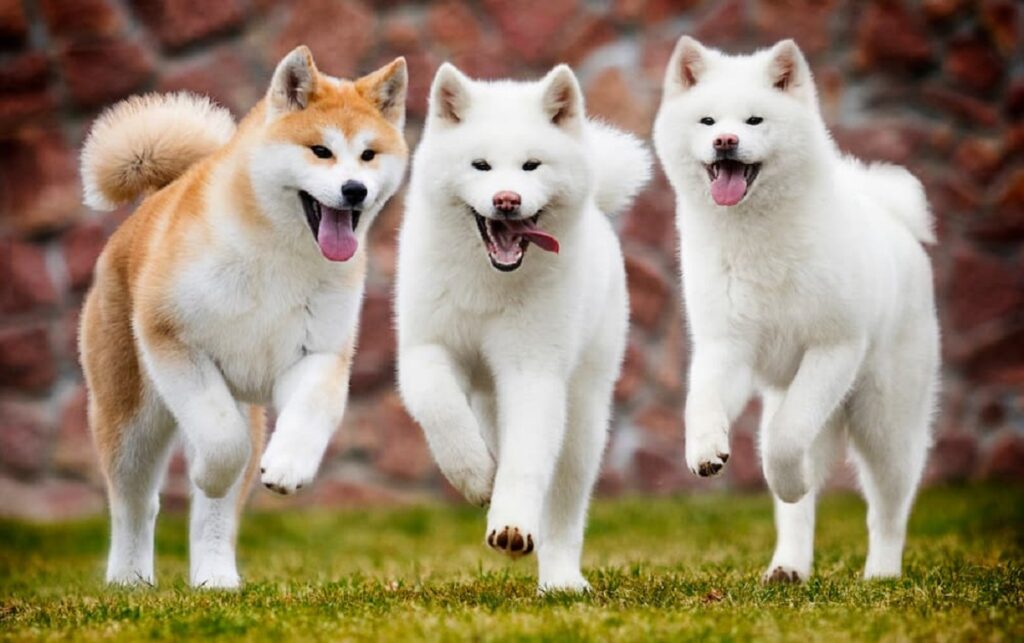
The Akita Inu is a dog breed that dates back thousands of years to the Akita prefecture. This Japanese dog is known for its loyal tendencies and for being loving and faithful to its owners. However, the Akita Inu makes no bones about being wary and aloof around strangers. It often finds itself on the list of red dog breeds.
It has a stocky build and a history of being used in WWII as guards and scouts. The Akita Inu gained greater popularity after the movie “Hachiko” came out. The breed made its way to the United States in the late 1930s when two pups were gifted to Helen Keller. It’s listed as one of the most expensive dog breeds.
The Akita Inu is a large-sized dog that stands 24 to 28 inches tall and weighs 70 to 130 pounds. It has a thick, fluffy coat that comes in white or red. The breed lives 10 to 12 years, on average.
Shiba Inu
The Shiba Inu looks much like a smiling fox, and sometimes, when it bounds, it acts like one, too. It also looks much like the Akita Inu but in a smaller package. The Shiba Inu has a long, storied history and is believed to be one of the original Japanese dog breeds.
When the Shiba Inu gets excited, be prepared for the Shiba scream, which sounds like a howl mixed with a whine mixed with a cry. Shiba Inus are typically red and white with a short stature. It’s the most popular companion dog in the country and tends to be an outgoing dog with a unique personality.
The Shiba Inu is smaller than the Akita, standing just 13.5 to 16.5 inches tall and weighing only 15 to 24 pounds. Like its larger counterpart, it has a fluffy coat with a coarse outer coat and a thick undercoat, as well as a curly tail. Shibas typically live to be 12 to 15 years old.
Hokkaido Inu
The Hokkaido Inu, also known as the Hokkaido Ken, is a sight to behold. This is a gorgeous Japanese pup that stands proud. The Hokkaido Inu is an alert, intelligent dog that is good at problem-solving and is content to accompany its owner on a task-completing mission. Indoors, the Hokkaido Inu is a devoted companion and is very protective of its owner. Shiba Inus are known as hunting dogs should be socialized early to prevent distrust of strangers.
Like Shiba Inus, Hokkaido Inus are medium sized dogs with a height of 17 to 20 inches and a weight of 35 to 65 pounds. They, like Shibas, live to be 12 to 15 years old as well.
Kai Ken
If you’re looking for a devoted companion that will keep you on your toes, you’ll find it in the Kai Ken. This pup is not only super intelligent and alert, but it’s also one Japanese dog that you will need to keep physically and mentally stimulated. They were originally bred to hunt deer and wild boars and are very agile dogs.
Additionally, the Kai Ken is a hunting dog that stands out for its gorgeous black brindle coat. Like the rest of the native breeds, it has a thick outer coat. While it’s a seemingly rare dog in the country now, in 1934, the Japanese Kennel Club registered the Kai Ken just 5 years after its discovery.
The Kai Ken is a medium Japanese dog breed, standing between 16.5 and 22 inches tall and weighing between 25 to 50 pounds. The Kai Ken is one of the longer-living breeds with a life expectancy of 14 to 16 years.
Shikoku
The Shikoku dog is one of the wolf-dog breeds, and it looks very similar to the Akita Inu and Shiba Inu in its stature but has markings that would make it easy for someone to confuse it with a wolf at first glance.
Shikoku dogs are hunting dogs, but they’re very affectionate and energetic, which means they’ll need a household with active people. The Shikoku Inu is very easy to train and will need it because the breed is notorious for being strong-willed at times.
Shikoku dogs are medium in size, standing at 17 to 21 inches tall and weighing between 30 and 55 pounds. Like the Akita and Shiba Japanese breeds, it has a double coat that’s softer underneath. They live an average of 10 to 12 years.
Kishu Ken
The Kishu Ken is a spitz-style dog that bears the name of Japan’s Kishu region. It’s one of the quieter Japanese dog breeds that’s both brave and intelligent. The Kishu Ken is very loyal to its owner, but it is often best in a single-pet household for two reasons.
One, it has a strong prey drive, having been bred as a hunting dog for wild boar, which puts smaller animals at risk. Second, it tends to be aggressive toward other dogs. However, the Kishu Ken is an extremely loyal and protective breed that makes a great companion.
The Kishu Ken is a medium Japanese dog, standing at 15.5 to 22 inches tall with a weight that falls between 30 and 60 pounds. It has an average lifespan of 12 to 15 years.
Other Japanese Dog Breeds
There are other Japanese dog breeds that maybe don’t have the Japanese history and legendary movies made about them, but they still stand out as companion dogs that many people around the world seek. These other Japanese breeds may have different characteristics. Let’s take a look at a few.
Japanese Spitz
The Japanese Spitz is one of the newer Japanese dogs on the list, with origins that date to the early 20th century. They have snow-white coats that make them look a lot like mini American Eskimos.
The Japanese Spitz is a very friendly dog with a huge personality, and they’re often sought after as companion dogs. This Japanese dog is very intelligent and easy to train.
The Japanese Spitz is a smaller dog with a height of only 12 to 15 inches and a weight that falls between 11 and 20 pounds. A healthy Japanese Spitz can live between 12 and 14 years.
Japanese Terrier
The Japanese Terrier sports a vastly different look than the other breeds listed on this page. They’re compact in size and have a short, sleek coat that departs from the fluffy coats exhibited by most of the Japanese dogs we talk about on this list.
However, the Japanese Terrier makes for an excellent pup to have around because it’s got personality in spades and is very lively, which means it will do well in active households. The Japanese Terrier is charming and confident, but it is a very curious pup. They make excellent companion dogs.
Japanese Terriers are the second smallest on this list, standing at just 8 to 13 inches tall and weighing only 5 to 9 pounds. The life expectancy of a Japanese Terrier is between 12 to 15 years.
Tosa Inu
We mentioned the smallest dog, the Japanese Terrier; now we’re gonna introduce the biggest on this list: the Tosa Inu. The Tosa Inu hails from the Tosa region and is one of the rarer breeds on this list as well. It is sometimes called the Japanese Mastiff because of its massive size.
For the same reason, in Japanese culture, the Tosa Inu is often compared to Sumo wrestlers. Originally bred as the ultimate fighting dog, it may still sometimes carry the stigma of being an aggressive Japanese dog, but it is actually very affectionate to its family.
The Tosa Inu is a giant dog that stands 22.5 to 32 inches tall and can weigh anywhere between 100 and 200 pounds. Even though it’s a mastiff breed, the Tosa Inu can still live 10 to 12 years.
Ryukyu Inu
The Ryukyu Inu is one of Japan’s endangered breeds, with only hundreds estimated to be left in the world. As such, it’s protected by the Japanese Dog Preservation Society. A natural prey hunter, it can climb trees and seek out game such as wild boar.
This Japanese dog has the spitz style and is often found in a brindle pattern. They originate from the Okinawa Islands. This breed is known for developing strong bonds with its family.
The Ryukyu Inu is a medium dog that ranges from 18 to 20 inches tall and weighs around 30 to 55 pounds. The lifespan of this Japanese dog breed is 12 to 15 years.
Japanese Chin
The Japanese Chin is an adorable pup that often finds itself on the list of small dog breeds and Chinese dog breeds, as it originated in China and then made its way to Japan as a gift to the Japanese Aristocracy. It is a toy breed and prefers to be a lap dog.
They are very affectionate dogs that love to be with their owners and have a gentle nature and an eager-to-please disposition that makes them loved by all. Japanese Chins do have a shorter snout. The coat is fluffy, but it’s not a spitz-style dog.
The Japanese Chin is the smallest on the list, with a height of 8 to 11 inches and a weight that ranges between just 4 to 9 pounds. Japanese Chin dogs live 12 to 14 years.
Acquiring a Japanese Dog
When it comes to adopting a Japanese dog, it’s best to go through a reputable breeder who honors their bloodlines. They should be able to provide paperwork for the pups they’re selling.
When it comes to Japanese dogs, you’ll want to make sure you pick the appropriate breed for you as their personality traits can differ.
Unless you’re an experienced dog handler, the Tosa should be avoided. This breed is known for its alpha tendencies and was once feared as one of the most aggressive dogs in the country. Today, that viewpoint has shifted, but it’s still a good idea to avoid the breed if it’s your first dog.
Most Popular Japanese Dog Names
In Japanese culture, there are many popular names for dogs, including Hiro, Hachi, Shiro, Aiko, Yuki, Pochi, and Hana.
FAQs
Name Six Dogs Native to Japan.
The six native dogs to Japan are Kai Ken, Hokkaido Ken, Kishu Ken, Shikoku Ken, Akita Inu, and Shiba Inu. These all have a history in the country that dates back thousands of years.
What Is the Fluffiest Japanese Dog Breed?
The Shiba Inu is the fluffiest of Japanese dog breeds. This fluffy dog breed has bushy coats and fluffy tails that stand out. They also tend to strongly resemble foxes.
What Breed Was Hachiko?
Hachiko, the most popular dog in Japan, was an Akita Inu. This dog is revered in the Asian nation for its loyalty, and Hachiko certainly put that on display when he returned to the train station every day after his owner died.
Conclusion
Japanese dog breeds, like others, bring a lot to the table in terms of offering companionship and being faithful family pets. Be sure to check out the personality traits of pups and their activity levels to ensure they’ll mesh well with your lifestyle.
But one thing is for sure: no matter which Japanese dog breed you decide to call your own, you won’t regret it.
If you want to explore pups from other countries, check out our list of Mexican dog breeds.
From the dignified Akita to the playful Shiba Inu, Japan offers a remarkable array of dog breeds, each imbued with a unique blend of personality and poise. These breeds, often characterized by their loyalty, intelligence, and striking appearance, reflect centuries of careful breeding and a deep cultural appreciation for canine companionship. Whether you’re seeking a spirited companion for an active lifestyle or a calming presence in your home, exploring Japanese dog breeds reveals a rich tapestry of canine character waiting to be discovered. Their distinct traits make them a captivating choice for discerning dog lovers worldwide.

